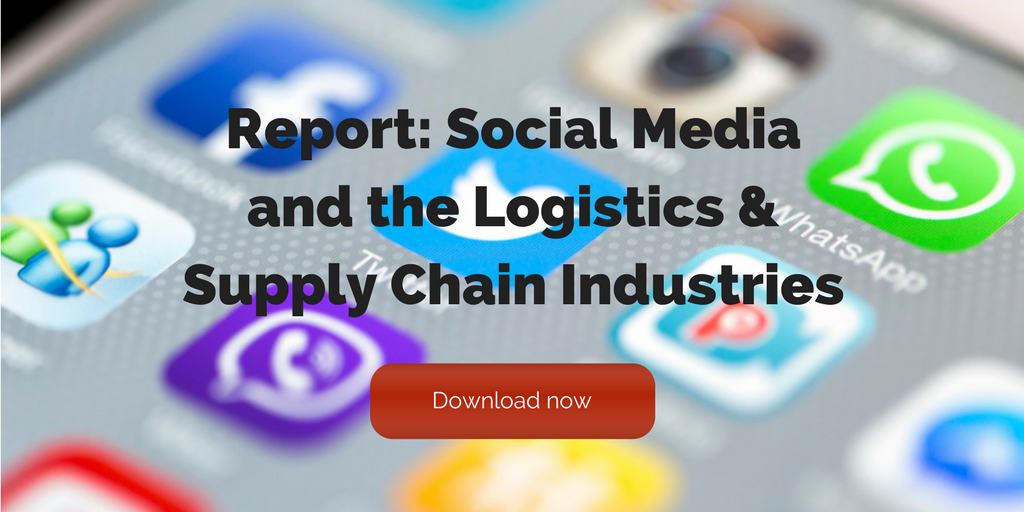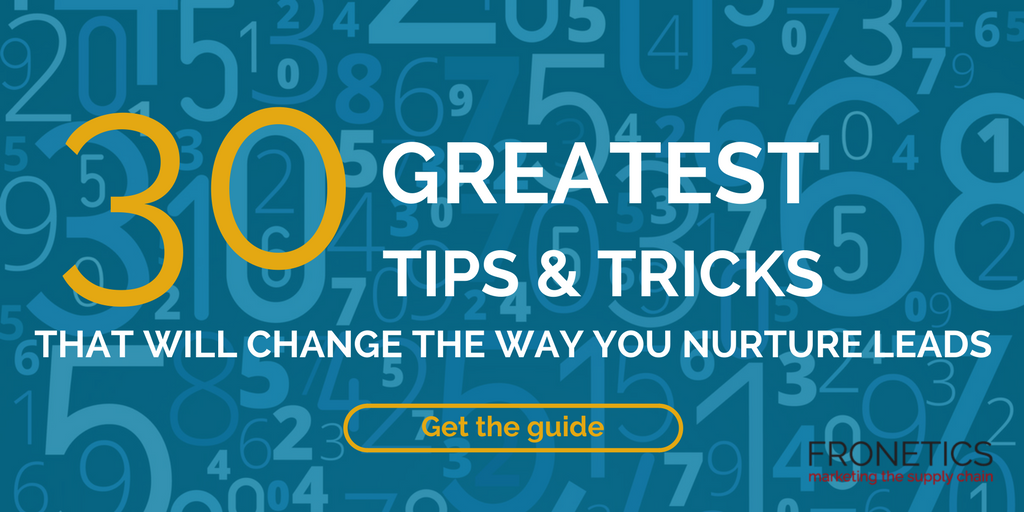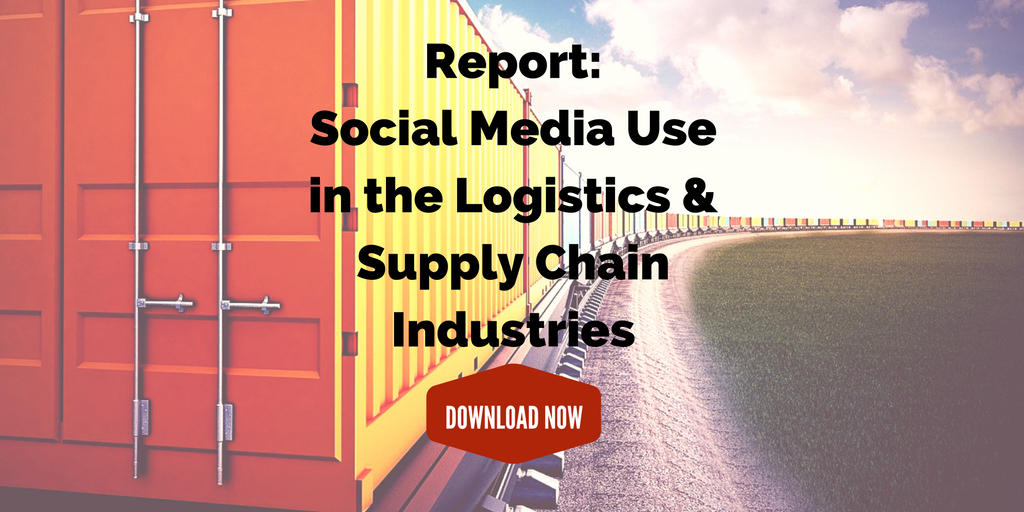
by Fronetics | Apr 11, 2018 | Blog, Content Marketing, Logistics, Marketing, Social Media, Supply Chain
Updated December 5, 2024
Today’s B2B buyer’s journey involves more internet research and more social media use.
The B2B buyer’s journey has undergone a dramatic transformation, driven by digital innovation and changing buyer preferences. Research from Gartner shows that B2B buyers now spend only 17% of their total purchase journey time meeting directly with potential suppliers. Instead, they dedicate 27% of their time researching independently online.
Key Trends Shaping the B2B Buyer’s Journey
Digital-First Research Phase
According to TrustRadius’ 2023 B2B Buying Disconnect report, 87% of buyers want to self-serve part or all of their buying journey. This shift toward digital self-service has fundamentally changed how B2B companies must approach their marketing and sales strategies.
The Rise of Multi-Channel Engagement
Recent data from McKinsey (2023) reveals that B2B buyers regularly use ten or more channels throughout their purchase journey, compared to just five channels in 2016. This multichannel approach includes:
- Online research and comparison tools
- Social media platforms
- Peer review sites
- Virtual product demonstrations
- Video content
- Interactive webinars
The Impact of Peer Influence and Social Proof
LinkedIn’s State of B2B Marketing report highlights that 84% of B2B buyers are more likely to purchase from vendors recommended by their professional network. This emphasis on peer validation has made social proof and customer testimonials more crucial than ever.
Adapting Your Strategy to the Modern Buyer’s Journey
Content Personalization and Industry Expertise
Recent research by Salesforce indicates that 76% of B2B buyers expect vendors to understand their business needs and industry challenges specifically. This demands:
- Industry-specific content creation
- Personalized solution recommendations
- Targeted thought leadership content
- Custom ROI calculations
The Role of Digital Content in Decision Making
Content continues to play a pivotal role, but its format and delivery have evolved. According to HubSpot’s 2023 State of Marketing Report, the most effective content types now include:
- Video content (preferred by 91% of B2B buyers)
- Interactive tools and calculators
- Case studies and success stories
- Industry research and original data
- Expert webinars and virtual events
Strategic Implications for B2B Companies
Understanding the modern B2B buyer’s journey is crucial for optimizing marketing and sales efforts. Companies must:
- Invest in robust digital presence across multiple channels
- Create high-quality, industry-specific content
- Leverage social proof and customer testimonials
- Provide self-service information and tools
- Maintain consistent omnichannel engagement
The B2B buying process hasn’t necessarily shortened, but it has become more complex and digitally oriented. Success requires adapting to these changes while maintaining focus on delivering value throughout the buyer’s journey.
Infographic: the B2B buyer’s journey

The B2B buyer’s journey continues to evolve with technological advancement and changing buyer preferences. Companies that understand and adapt to these changes – by providing comprehensive digital resources, personalizing content, and enabling self-service options – will be better positioned to attract and convert modern B2B buyers.
Related posts:


by Fronetics | Apr 10, 2018 | Blog, Content Marketing, Logistics, Marketing, Strategy, Supply Chain
Check out these marketing automation tools for email workflows, social media scheduling, and customer relationship management.
Lately it seems like everyone is talking about marketing automation. As B2B buyers increasingly demand personalized experiences through the buyer’s journey, marketers’ jobs are getting tougher, as they need to provide custom lead-nurturing content to all prospects in their databases.
And that’s where automating marketing tasks can help.
The term “marketing automation” refers to a variety of tools used to automate the process of personalizing leads’ interactions with your business. The sheer variety of these tools can sometimes be overwhelming — so we’ve pulled a few of our favorites in the categories of email workflows, social media scheduling tools, and customer relationship management.
6 marketing automation tools for supply chain and logistics marketers
1. Customer.io
This tool lets you send targeted messages to your customers, crafting them based on how they interact with your business, and making personalized messages simple. You can also keep track of conversions and create customer profiles. Our favorite part? It integrates with your mobile app or website, letting you see data in real time and trigger actions by adding in predefined rules.
2. Constant Contact
This powerful tool has some features that are unique — and can take your marketing capabilities beyond the basics. Beyond setting up and managing an automated database, Constant Contact offers Facebook fan promotion, coupons and deals, and event management.
3. AdRoll
This is an extremely effective tool for retargeting customers through re-engagement on Facebook, Twitter, and elsewhere on the web. It offers cross-device and cross-platform retargeting capabilities, as well as flexible segmentation, letting you provide customized experiences that dramatically improve your marketing efficiency. It also offers customized budgeting and full control over ad spend.
4. Pardot
Pardot is an all-inclusive marketing automation suite, but it’s particularly strong for amping up your engagement with CRM integration. It’s a great tool for helping your sales team shorten the sales cycle. And, in addition to CRM integration, it offers email marketing, lead nurturing, lead scoring, and ROI reporting.
5. Marketo
This cloud-based marketing software lets you drive revenue with lead management and mobile marketing. It not only helps build customer relationships, but it helps you sustain them as well. Best of all, you can try it out for free until you’re sure it’s right for your business.
Bonus all-in-one tool: HubSpot
HubSpot is an inbound-marketing tool that lets you generate leads, close deals, and manage your sales pipeline from start to finish. It integrates beautifully with a content marketing strategy, with the goal of turning outbound leads into inbound ones. It includes revenue reporting, custom-event reporting, custom-event automation triggers, predictive-lead scoring, contacts and company reporting, and event-based segmentation.
What marketing automation tools does your business use?
Related posts:


by Fronetics | Jan 15, 2018 | Blog, Marketing
Updated January 2025
Marketing automation can help supply chain marketers become more efficient and more successful in earning and converting leads.
Automation is changing today’s supply chain, and not just because robots and autonomous vehicles are scooting around warehouse floors. Supply chain marketers can use automation to drive efficiency and improve our success rates.
HubSpot recently reported that businesses using marketing automation to nurture leads received a whopping 451% increase in qualified leads. So how can you reap these benefits? Let’s take a quick look at automated marketing applications in supply chain marketing.
How can I use marketing automation for supply chain lead generation?
B2B buyers are increasingly demanding vendors provide personalized experiences throughout the buyer’s journey. That makes marketers’ jobs 1 million times more difficult in having to provide custom lead-nurturing content to all prospects in the database. Enter, marketing automation — a way to automate the process of personalizing leads’ interactions with your business. HubSpot describes marketing automation as “software and tactics that allow companies to buy and sell like Amazon — that is, to nurture prospects with highly personalized, useful content that helps convert prospects to customers and turn customers into delighted customers.”
Examples of ways supply chain marketers might use marketing automation include:
- Chatbots
- Social media scheduling tools
- Thank-you, welcome, and other triggered-by-an-event emails
- Event reminders
- Email workflows
The Evolution of Marketing Automation in Supply Chain
Marketing automation is transforming how supply chain marketers generate and nurture leads. According to Salesforce’s 2023 State of Marketing Report, 71% of marketers report significant productivity improvements through automation implementation.
Current State of Automation Adoption
Recent market research paints a clear picture of automation’s growing impact in B2B marketing. According to Gartner’s latest findings, more than three-quarters of B2B marketers have either implemented or are in the process of implementing marketing automation solutions. This widespread adoption is driven by tangible results: teams are seeing their manual task load reduced by nearly a third through automation. The benefits extend beyond efficiency – Salesforce’s 2023 research shows that 69% of marketing teams have enhanced their personalization capabilities through automation. These improvements in efficiency and customization translate to bottom-line impact, with McKinsey reporting that companies typically achieve a 15-20% reduction in their overall marketing costs after implementing automation solutions.
Understanding Modern Supply Chain Marketing Automation
Core Technology Components
B2B buyers expect personalized experiences throughout their journey. Successful marketing automation for supply chain lead generation combines strategies like these:
- Chatbots
- Social media scheduling tools
- Thank-you, welcome, and other triggered-by-an-event emails
- Event reminders
- Email workflows
- AI-powered lead scoring
- Behavioral analytics
- Multi-channel campaign management
- Predictive engagement tools
Key Automation Capabilities
Modern supply chain marketing automation platforms offer:
1. Intelligent Lead Management
- Automated lead scoring
- Behavior tracking
- Engagement analysis
- Qualification workflows
2. Multi-Channel Campaign Orchestration
- Integrated social media management
- Content distribution
- Cross-platform analytics
- Performance tracking
3. Email Marketing Automation
- Dynamic segmentation
- Behavioral triggers
- Performance optimization
- A/B testing capabilities
Implementation Strategy
Creating Effective Automation Workflows
We see companies achieve the best results when they focus on:
- Strategic Segmentation
- Industry-specific targeting
- Behavioral segmentation
- Company size consideration
- Content Personalization
- Dynamic content delivery
- Automated follow-up sequences
- Engagement-based adjustments
- Lead Qualification
- Predictive scoring
- Behavior analysis
- Sales readiness assessment
Example of Marketing Automation for Supply Chain Lead Generation: Automated Email Workflows
Automation is particularly useful in email. I’ve written before about how marketers spend way too much time creating marketing emails. How much of your day could you gain back if you didn’t have to create, send, and follow up with prospects via email?
One easy and effective way to utilize marketing automation in your emails is to set up an automated email workflow. That is a series of emails that a user will receive from you based on actions they take.
First, create an email list from your database based on certain criteria — like leads who have been inactive for 6 months or longer. Send them an email inviting them to download a new industry report you have published (using personalization tokens to show them its relevancy to their business). Then set a second email to send to only those who downloaded the report a day or two later thanking them for downloading. A third email could follow several days later offering a case study related to the topic. When someone downloads that case study, the workflow could trigger the designated sales rep to receive a notification to follow up with the prospect.
Instead of having to watch your database to see when a prospect takes each of these actions, then completing the necessary follow-up, automation software (we like HubSpot) can do this for you right when it happens. What’s more, those leads that have gone through the workflow will be more qualified (meaning more likely to buy), so your sales reps’ time will be better spent as well.
Measuring Success of Marketing Automation for Supply Chain Lead Generation
Key Performance Indicators
According to McKinsey’s Supply Chain Analytics Report, successful implementations show:
- 55% improvement in lead quality
- 15-20% reduction in marketing costs
- Increased sales team productivity
- Faster sales cycles
Marketing automation won’t make you irrelevant
Fear not, supply chain marketer. Marketing automation will not make you redundant. Instead, automation makes marketers more efficient, more successful, and more valuable. It’s really a win-win.
Related posts:

by Fronetics | Jul 27, 2017 | Blog, Content Marketing, Current Events, Marketing, Social Media
In July’s social media news, platforms saw a rise in daily active users and broke records in more than one category.
Once thought to be a passing trend, social media is nowhere near slowing down in terms of growth. Next Web reported that India has taken over as the largest audience of Facebook, beating out the U.S. with over 241 million active users. Active users in India are up 27% in the past six months, twice the rate of U.S. users.
But the social media news doesn’t stop there. Facebook and Instagram are topping charts with their active users. LinkedIn and Google are boosting job opportunities through new features and search capabilities. And social media monitoring platforms are adding video to their repertoire.
Here’s a look at this month’s social media news.
Facebook reaches over 2 billion monthly active users around the world
India isn’t the only country boosting Facebook user numbers. The social media giant just celebrated having “2 billion people connecting and building communities on Facebook every month.” The company thanked its users with a personalized video and Mark Zuckerberg’s promise to take the global connection and use it to create a “more open and connected” world.
Instagram Stories reaches 250 million daily active users and adds live video replay
Instagram Stories continues to take over the ‘stories’ arena with 250 million active daily users. Snapchat, which founded the stories format, is falling far behind with only 161 million active daily users. Instagram Stories was unveiled last August and has experienced remarkable growth and success thanks to support from its sister company, Facebook. The social media platform has also introduced its newest feature, a share button with the ability to replay live videos for up to 24 hours.
Facebook tests custom audiences based on engagement with Instagram Business Profiles
Adweek reports that “Facebook is testing the ability for brands to create custom audiences based on engagement with Instagram business profiles.” This new type of filtering could allow brands to create engagement audiences, people who have previously engaged with your content on Instagram. Filters could include all interactions, users that have commented on a post, or any activity within a certain time frame. Though only in the testing stages, these custom audiences could help brands create specific messaging for targeted audiences based on their interactions with a brand’s Instagram page.
CrowdTangle adds video views to metrics
CrowdTangle, a social media monitoring platform for brands, has just added video views to its metrics for Facebook and Instagram. With video’s increasing popularity, the company felt it was important to offer its clients a way to measure how their videos are performing. “Publishers can now easily track emerging new trends and best practices on Facebook and Instagram, as well as discover great videos and video creators, see overall video views across their industry, and benchmark themselves against competitors,” CrowdTangle says.
LinkedIn creates new search to boost job opportunities
LinkedIn has created new search capabilities that make it easier for users to uncover new jobs and other professional opportunities. The new search also allows users to see the companies and job titles of the people who found them in a search, identifying opportunities that align with the user’s resume. Available on your phone or desktop computer, these new features make searching jobs and hiring managers that much more accessible.
Google launches Google for Jobs
Partnering with the biggest job searching sites — like LinkedIn, Monster and CareerBuilder — Google just introduced a new initiative to allow users to find job opportunities directly through a Google search. The new search update also allows users to receive email alerts of new employment postings in real time. “When Google for Jobs launches, it will act as kind of a mega job-search engine that will let you sort through multiple career sites in one go,” says Google CEO Sundar Pichai.
Related Posts


by Fronetics | Jan 16, 2017 | Blog, Content Marketing, Logistics, Marketing, Supply Chain
Keep these four trends in mind when planning out your marketing efforts in 2017.
Marketo recently revealed its predictions for upcoming marketing trends for 2017. It’s a list of technologies, strategies, and tactics that the marketing software automation company believes will be important to focus on over the next year.
We culled through these predictions to highlight what the supply chain industry needs to know. Below are four trends marketers should have on their radars.
4 marketing predictions to watch out for
1. Customer-Centric Marketing
For B2B companies, customer-centric marketing means buyer-centric marketing. Because the cost of switching vendors is increasingly low, and the buyer is faced with endless choices, it’s likely that 2017 will see “an aggressive shift in attention toward increasing customer spend.”
This means increasing your focus on building and cultivating relationships. Marketo suggests that companies balance their marketing spend to “invest in building engagement, brand loyalty, and advocacy with current customers rather than just finding new ones.”
It’s likely that technology will play a big role in this 2017 trend. Your company needs marketing team members who are tech-savvy and who know how to analyze and respond to customers’ digital signals.
Focusing on the customer also means building authentic connections and a move toward “giving as much as you get, if not more.” We’ll see more and more customer advocacy, which means that marketers need to focus on taking relationships beyond the transactional. Marketo recommends “providing them with opportunities to showcase their expertise and be recognized by their peers as leaders and innovators.”
The key takeaway: 2017 is the year of building quality relationships.
2. A New Generation of Marketers
We used to live in a marketing climate where specialization was the key to success — no longer is that the case. Your business needs leaders who are “full-brain marketers,” multi-talented generalists who are comfortable handling challenges from the creative design to demand generation — and beyond.
It’s time to abandon thinking in silos. Marketo recommends that your marketing team be in constant connection with other teams within the company. “B2B marketers can now use technology to ensure their sales team have visibility and participation in programs — versus being isolated from critical activities.”
This kind of structural shift requires openness and humility. Marketers need to be willing to take questions and ask them, and to be open to making changes based on increased intra-business collaboration.
Marketo predicts that 2017 will see the perfect storm hit the marketing world, bringing an intersection between fulfilling customer needs, storytelling, and digital interactions. Your company needs to look at its organization and build deep expertise across these three functions. “Any marketing organization that’s missing one of these three functions is destined for failure,” warns Marketo.
This new generation of marketers means that top-performing B2B companies will be making optimal use of technology and data. You need to be investing in resources and technology to drive data enrichment and data governance activities to set a good foundation for your account-based marketing strategy. This also means working closely with sales to understand their thought process for lead prioritization and acceptance.
Here, the key to success is open communication within your organization.
3. Techniques
Marketo has laid out a new equation for how marketers will incorporate techniques to engage buyers at every stage of the cycle:
Inbound + Broad-based lead generation + Account-based marketing + Paid media personalization + Direct marketing = Successful customer engagement
What does this mean for the supply chain? Your company can use a combination of these strategies to engage prospects. For example, combining account-based marketing (ABM) strategies with broad-based strategies will allow marketers to build long-term customer relationships, while bridging their advertising and marketing technologies to demonstrate ROI.
All this focus on ABM solutions will allow marketers to become more efficient, taking advantage of cutting-edge technologies. Marketo suggests creating a detailed ABM plan for all departments, which includes creative marketing ideas to test, as well as new technologies.
It’s time to harness the technology at your fingertips.
4. Content & Channels
2017 is likely to usher in a return to value over volume, both in content assets and in content distribution channels. It’s time to stop creating content for the sake of creating content and to shift toward “deeply listening to and understanding the customer.” This will allow you to cull some of the content and channels that aren’t benefitting your business.
It’s easier than you might think to put this trend into practice. Marketo suggests starting by “deeply understanding the content you already have, and taking the time to evaluate what resonates and what doesn’t.” Next, you can create a plan to keep your content strategy going forward in a meaningful way.
As far as channels go, user experience, particularly for mobile, is going to be increasingly important. You can prepare for this by adding structured data to your site, and by providing valuable content. It’s important to keep a watch on the changing user behavior and expectations, as it will be the biggest driver of change in SEO.
As algorithms continually change, and chronological timeline updates increasingly being phased out, social media channels will put more focus on individuals over brands — this means an absence in brands showing up in feeds organically. You can rise to this challenge by making real-time engagement a priority.
We’ll also see ad inventory becoming tighter and more expensive across social platforms. This means you’ll need to become more specific about the audiences you target, and make your offers increasingly personalized and relevant. Marketo adds the hopeful prediction that “advertisers will benefit from more ways to track offline conversions and non-immediate revenue.”
As email technology advances, email campaigns will begin to predict the content you want and really need. The end result here is “targeted, personalized communications optimized for each person, based on their online and email behaviors.”
The takeaway for content in 2017 is: quality over quantity.
Related posts:









